The Well-Tempered Ear
Classical music: There was so much to like about the Grand Tour finale of the 2019 Madison Early Music Festival. But where were the high notes in Allegri’s legendary “Miserere”?
8 Comments
IF YOU LIKE A CERTAIN BLOG POST, PLEASE SPREAD THE WORD. FORWARD A LINK TO IT OR, SHARE IT or TAG IT (not just “Like” it) ON FACEBOOK. Performers can use the extra exposure to draw potential audience members to an event. And you might even attract new readers and subscribers to the blog.
By Jacob Stockinger
Fair is fair.
Before he talks about last Saturday night’s conclusion of the successful 2019 Madison Early Music Festival – which marked its 20th anniversary — The Ear has a confession to make: He generally prefers later Baroque music and he generally prefers instrumental music to vocal or choral music.
That said, he nonetheless had a memorable and very enjoyable time on the “Grand Tour” during the well-attended All-Festival concert. There was so much to like and to admire.
The concert used the conceit of a Grand Tour by a composite 17th-century traveler going to London, Venice, Rome, Naples, Paris and Dresden to take in the local sights and local music, and included lesser-known composers such as William Lawes and William Child as well as such famous figures as Claudio Monteverdi, Giovanni Gabrieli , Jean-Baptiste Lullyand Heinrich Schütz.
Like most journeys, this one – once again assembled in an ingenious scissors-and-paste job by early music specialist Grant Herreid (below) – had many entertaining and uplifting moments.
But it also had one big disappointment.
The Ear really looked forward to hearing a live performance of the famous “Miserere” by Gregorio Allegri (below) as a high point. But those haunting, ultra-high descant notes that give you goosebumps and that you never forget hearing just never materialized.
Maybe it had to do with the different ornamentation that the MEMF forces used. Maybe it was based on a different manuscript or score. Maybe there was no one capable of singing those spellbinding and unforgettable high notes.
Whatever the reason, The Ear’s hope for a live performance of the dramatic and iconic work were dashed and the famous, even classic, recorded versions – the 1980 recording by the Tallis Scholars is heard in the YouTube video at the bottom — remain for him the unsurpassed standard.
The evening also had its ironies. That same night on the NBC TV news The Ear saw a story about “overtourism” in Europe and China. Venice, for example, has now shrunk to only about 50,000 unhappy residents who put up with some 20 million tourists a year.
But centuries ago, travel was a rare and exotic luxury of the wealthy and well-educated, not an affordable indulgence or curiosity by ever-expanding middle classes. And this metaphorical trip proved an ideal vehicle to sample 16th- and 17th-century music in England, France, Germany and Italy.
Combining high culture and low, Herreid chose witty and detailed travelogue texts that gave the audience the rich flavor of various cultures at the time.
Details mattered to the four sharp-eyed travelers on which this tour was based. So as “our hero” wandered, we got to hear about the “libidinous ladies” of Naples and the musical talented courtesans of Venice as well as the richly attired archbishop of Paris attending a feast day service in the newly finished Notre-Dame cathedral.
Such descriptions were well delivered by unnamed narrators (below) from the chorus and proved a refreshingly earthy and entertaining counterpoint to the more serious spiritual and religious music of the era.
Another big satisfaction was the exceptional quality of the ensemble playing – exhibited even in large amounts of less interesting music — by the many singers and instrumentalists on the stage of Mills Hall, and, at one point, in the hall’s balcony.
Whether the players and singers were conducted by Herreid or by assistant conductor Jerry Hui — a UW-Madison graduate who is now a tenured professor at UW-Stout — the music sounded tight, authentic and expressive.
As for more superficial pleasures, it is great visual fun watching such early versions of modern string, wind and percussion instruments being played — trombone-like sackbuts, oboe-like shawms, flute-like recorders and lute-like theorbos. (Below are cello-like viols.)
The players, both faculty and students, were particularly convincing on their own in the sound painting done to depict battle scenes and political upheaval. And who will ever forget the surprise of loud foot-stomping by all the performers and conductor?
Herreid was absolutely spot-on to keep the program to about 80 minutes with no intermission. It helped the audience stay in the spirit of the Grand Tour and added cohesion to the program.
The Grand Tour, in short, proved outstanding in concept and excellent in execution.
But was The Ear alone in missing to those high notes?
Tags: #All-FestivalConcert, #ArgentineanComposer, #BaroqueEra, #BaroqueMusic, #BaroqueOrnamentation, #BaroqueRecorder, #BaroqueSingingStyle, #BlogPost, #BlogPosting, #BlogReview, #ChineseTourism, #ChoralMusic, #ClassicalRecording, #ClaudioMonteverdi, #DresdenGermany, #EnsemblePlaying, #FacebookPost, #FacebookPosting, #FacultyMember, #FeastDay, #GiovanniGabrieli, #GrandTour, #GrantHerreid, #GregorioAllegri, #HeinrichSchütz, #HighCulture, #HighPoint, #InstrumentalMusic, #Jean-BaptisteLully, #JerryHui, #LivePerformance, #LondonEngland, #LowCulture, #MadisonEarlyMusicFestival, #MeadWitterSchoolofMusic, #Middle-Class, #MillsHall, #Musicfaculty, #MusicReview, #NaplesItaly, #NBCNews, #NotreDame, #NotreDamedeParis, #ParisFrance, #ReligiousMusic, #RomeItaly, #SaturdayNight, #Scissors-and-Paste, #Sharp-eyed, #SistineChapel, #SoundPainting, #TallisScholars, #TelevisionNews, #theorbomusic, #UniversityofWisconsin-Madison, #VeniceItaly, #VocalMusic, #WealthyPeople, #Well-Attended, #Well-Education, #WilliamLawes, #YouTubevideo, ago, All-Festival concert, anniversary, anonymous, archbishop, Arts, attire, audience, authentic, balcony, Baroque, Baroque music, battle, blog, capable, cathedral, Cello, centuries, century, China, choral music, chorus, classic, Classical music, Claudio Monteverdi, cohere, cohesion, Compact Disc, composer, composite, concept, Concert, conduct, conductor, confession, counterpoint, courtesan, culture, cultures, deliver, delivered, description, detail, detailed, disappointment, drama, dramatic, Dresden, Early music, earthy, England, enjoyable, ensemble, entertaining, era, Europe, evening, excellent, execution, exotic, expressive, Facebook, faculty, fair, famous, feast day, fine, finish, flavor, flute, foot, forces, forget, forward, France, fun, Germany, Giovanni Gabrieli, goosebumps, Grand Tour, Grant Herreid, Gregorio Allegri, haunting, Heinrich Schütz, high, high culture, high notes, high point, iconic, ideal, ingenious, instrumental, instrumental music, instrumentalists, interesting, intermission, ironies, irony, Italy, Jacob Stockinger, Jean-Baptiste Lully, Jerry Hui, journey, ladies, lesser-known, libidinous, libido, like, link, live performance, local, London, loud, low, low culture, Lully, lute, luxury, Madison, Madison Early Music Festival, manuscript, materialize, matter, Mead Witter School of Music, MEMF, memorable, metaphorical, million, Mills Hall, Miserere, moment, Music, music review, Naples, narrator, NBC, new, news, nightly, Notre Dame, Notre Dame de Paris, Oboe, Orchestra, ornamentation, outstanding, overtourism, Paris, percussion, performer, playing, pleasurer, political, post, posting, prefer, professor, program, rare, reader, recorder, recording, refreshing, religious, religious music, resident, review, rich, Rome, sackbut, sample, satisfaction, Saturday night, scene, score, serious, service, share, shawm, short, sights, singers, Singing, Sistine Chapel, Sound, sound painting, spellbinding, spirit, spiritual, stage, standard, stomp, string, successful, superficial, surprise, tag, talented, Tallis Scholars, Television, television news, tenure, texts, theorbo, tight, time, tourism, tourists, traveler, travelogue, trip, Trombone, TV, unforgettable, unhappy, United States, University of Wisconsin-Madison School of Music, University of Wisconsin–Madison, unknown, unnamed, unsurpassed, upheaval, uplifting, UW-Stout, Vatican, vehicle, Venice, version, Viol, Viola, Violin, vocal music, watch, wealth, wealthy, well-educated, William Lawes, Wind, Wisconsin, witty, year, YouTube
Classical music: The Middleton Community Orchestra and UW-Madison horn player Dafydd Bevil excel in a concerto by Richard Strauss and a theater suite by Ralph Vaughan-Williams. Plus, the UW’s Perlman Trio performs Saturday afternoon
4 Comments
ALERT: On SATURDAY – (not today as first mistakenly listed) –at 3:30 p.m. in Morphy Recital Hall, the annual FREE concert by the UW’s Perlman Trio — named after benefactor Kato Perlman — will perform piano trios by Franz Joseph Haydn and Robert Schumann, and a piano quartet by Johannes Brahms. A reception will follow For more information about the student performers and the full program, go to: https://www.music.wisc.edu/event/the-perlman-trio/
By Jacob Stockinger
Here is a special posting, a review written by frequent guest critic and writer for this blog, John W. Barker. Barker (below) is an emeritus professor of Medieval history at the University of Wisconsin-Madison. He also is a well-known classical music critic who writes for Isthmus and the American Record Guide, and who hosts an early music show once a month on Sunday morning on WORT FM 89.9 FM. For years, he served on the Board of Advisors for the Madison Early Music Festival and frequently gives pre-concert lectures in Madison. Barker also took the performance photos.
By John W. Barker
The Middleton Community Orchestra (below), under conductor Kyle Knox, brought off a splendid concert on last Wednesday evening.
The opening item was the Introduction and Allegro, Op. 47, for string quartet and string orchestra by Edward Elgar. This is a broad work of great Romantic sweep, featuring the lush textures pitting a large ensemble against a miniature one.
The largely amateur Middleton orchestra fields a very large string section. It has not yet completely fused into a suave entity, but the 30-odd players did a brave job of capturing the music’s rhetorical richness.
The soloist for the evening was Dafydd Bevil (below), a French horn player who is very active in a number of orchestras and ensembles in the Madison area while currently engaged in doctoral studies at the University of Wisconsin-Madison’s Mead Witter School of Music.
Bevil boldly chose as his vehicle the second of Richard Strauss’ two horn concertos. Neither is heard in concert very much, though the Concerto No. 1 is a little more familiar from recordings. That is a bravura piece, composed in 1882, when Strauss (below) was 18, and was written for his father, Germany’s foremost horn virtuoso.
The Concerto No. 2 dates from the other end of Strauss’s career, in 1942, the first of some wind concertos undertaken during and after World War II. Intended to recapture his earlier instrumental style, it is a much more studied piece than its predecessor.
Bevil, clearly a player of exceptional skill and musicality, powerfully met Strauss’ showy and florid solo writing. This is a virtuoso musician with a promising future.
The remainder of the concert was devoted to the first of what would be a number of scores Ralph Vaughan Williams (below) prepared to fit Classical Greek plays. (RVW was himself a very accomplished master of ancient Greek.)
In 1912, inspired by the translations of Gilbert Murray, he produced music to set Murray’s English texts for three of the plays by Euripides: The Bacchae, Electra, and Iphigenia in Tauris.
Before that, however, in 1909, still early in his career, Vaughan Williams composed incidental music to a production (in Greek) of the comedy by Aristophanes, The Wasps.
From that Aristophanic score, the composer put together an orchestral concert suite of an overture and five incidental numbers. The overture itself has enjoyed some frequency of concert performances, but the full suite is little known to the public over here.
It was a clever stroke of programming that Kyle Knox (below) led the orchestra in the full suite. This is delightful music, full of typical Vaughan Williams whimsy, inventiveness, and cleverness. Sounding simple, it creates balances and details not easy to manage, but Knox and the orchestra performed it with dazzling flair. (You can hear the rarely performed full suite in the YouTube video at the bottom)
This is exactly the kind of enterprise that makes the Madison area’s musical life so stimulating and joyous.
Tags: #AmateurMusicians, #AmericanRecordGuide, #AncientGreece, #AncientGreek, #ClassicalGreece, #ClassicalGreek, #EdwardElgar, #EnglishLanguage, #FranzJosephHaydn, #FrenchHorn, #GilbertMurray, #GreekLiterature, #GreekTragedy, #HornConcerto, #HornMusic, #IncidentalMusic, #IsthmusNewspaper, #JohannesBrahms, #JohnW.Barker, #JohnWBarker, #KatoPerlman, #KyleKnox, #LateRomanticism, #MadisonEarlyMusicFestival, #MeadWitterSchoolofMusic, #MedievalHistory, #MiddletonCommunityOrchestra, #MiddletonWisconsin, #PerlmanTrio, #PianoQuartet, #PianoTrio, #RadioMusic, #RadioShows, #RalphVaughanWilliams, #RichardStrauss, #RobertSchumann, #RomanticMusic, #StringMusic, #StringQuartet, #TheWasps, #UniversityofWisconsin, #UniversityofWisconsin-Madison, #WindMusic, #WorldWarII, #WORT-FM89.9, allegro, amateur, Aristophanes, Arts, balance, brave, bravura, Cello, Chamber music, Classical music, cleverness, comedy, composer, concerto, critic, dazzling, details, doctoral, Early music, earlymusic, English, ensemble, Euripides, father, flair, florid, future, Germany, guest, History, host, incidental music, instrumental, introduction, Introduction and Allegro, Isthmus, Jacob Stockinger, job, Johannes Brahms, John W. Barker, Joy, joyous, large, lecture, lush, Madison, Medieval, Medieval history, miniature, Music, musicians, Orchestra, orchetsras, Overture, performance, photo, production, professor, promising, Radio, rhetoric, rhetorical, richness, Romanticism, score, solo, stimulating, String quartet, strings, studies, style, Suite, symphony, text, texture, translation, United States, University of Wisconsin-Madison School of Music, University of Wisconsin–Madison, vehicle, Viola, Violin, virtuoso, winds, YouTube
- May 2024
- April 2024
- March 2024
- February 2024
- January 2024
- December 2023
- November 2023
- October 2023
- September 2023
- August 2023
- July 2023
- June 2023
- May 2023
- April 2023
- March 2023
- February 2023
- January 2023
- December 2022
- October 2022
- September 2022
- June 2022
- May 2022
- April 2022
- March 2022
- July 2021
- June 2021
- May 2021
- April 2021
- March 2021
- February 2021
- January 2021
- December 2020
- November 2020
- October 2020
- September 2020
- August 2020
- July 2020
- June 2020
- May 2020
- April 2020
- March 2020
- February 2020
- January 2020
- December 2019
- November 2019
- October 2019
- September 2019
- August 2019
- July 2019
- June 2019
- May 2019
- April 2019
- March 2019
- February 2019
- January 2019
- December 2018
- November 2018
- October 2018
- September 2018
- August 2018
- July 2018
- June 2018
- May 2018
- April 2018
- March 2018
- February 2018
- January 2018
- December 2017
- November 2017
- October 2017
- September 2017
- August 2017
- July 2017
- June 2017
- May 2017
- April 2017
- March 2017
- February 2017
- January 2017
- December 2016
- November 2016
- October 2016
- September 2016
- August 2016
- July 2016
- June 2016
- May 2016
- April 2016
- March 2016
- February 2016
- January 2016
- December 2015
- November 2015
- October 2015
- September 2015
- August 2015
- July 2015
- June 2015
- May 2015
- April 2015
- March 2015
- February 2015
- January 2015
- December 2014
- November 2014
- October 2014
- September 2014
- August 2014
- July 2014
- June 2014
- May 2014
- April 2014
- March 2014
- February 2014
- January 2014
- December 2013
- November 2013
- October 2013
- September 2013
- August 2013
- July 2013
- June 2013
- May 2013
- April 2013
- March 2013
- February 2013
- January 2013
- December 2012
- November 2012
- October 2012
- September 2012
- August 2012
- July 2012
- June 2012
- May 2012
- April 2012
- March 2012
- February 2012
- January 2012
- December 2011
- November 2011
- October 2011
- September 2011
- August 2011
- July 2011
- June 2011
- May 2011
- April 2011
- March 2011
- February 2011
- January 2011
- December 2010
- November 2010
- October 2010
- September 2010
- August 2010
- July 2010
- June 2010
- May 2010
- April 2010
- March 2010
- February 2010
- January 2010
- December 2009
- November 2009
- October 2009
- September 2009
- August 2009
Archives
- 2,491,493 hits
Blog Stats
Recent Comments
| Brian Jefferies on Classical music: A major reass… | |
| welltemperedear on What made Beethoven sick and… | |
| rlhess5d5b7e5dff on What made Beethoven sick and… | |
| welltemperedear on Beethoven’s Ninth turns 200… | |
| Robert Graebner on Beethoven’s Ninth turns 200… |
Tags
#BlogPost #BlogPosting #ChamberMusic #FacebookPost #FacebookPosting #MeadWitterSchoolofMusic #TheEar #UniversityofWisconsin-Madison #YouTubevideo Arts audience Bach Baroque Beethoven blog Cello Chamber music choral music Classical music Compact Disc composer Concert concerto conductor Early music Facebook forward Franz Schubert George Frideric Handel Jacob Stockinger Johannes Brahms Johann Sebastian Bach John DeMain like link Ludwig van Beethoven Madison Madison Opera Madison Symphony Orchestra Mead Witter School of Music Mozart Music New Music New York City NPR opera Orchestra Overture Center performer Pianist Piano post posting program share singer Sonata song soprano String quartet Student symphony tag The Ear United States University of Wisconsin-Madison School of Music University of Wisconsin–Madison Viola Violin vocal music Wisconsin Wisconsin Chamber Orchestra wisconsin public radio Wolfgang Amadeus Mozart YouTube





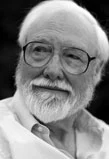
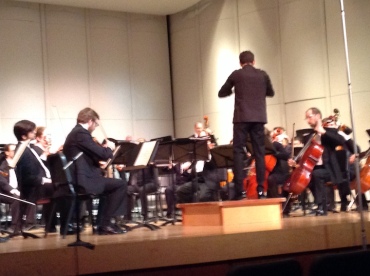
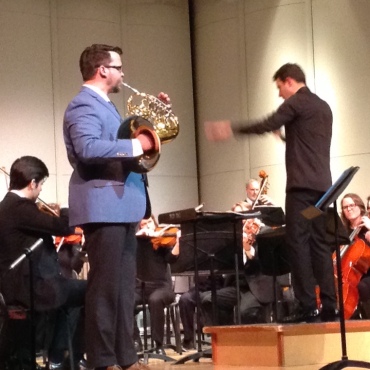
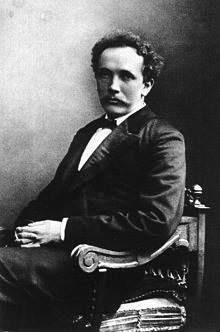
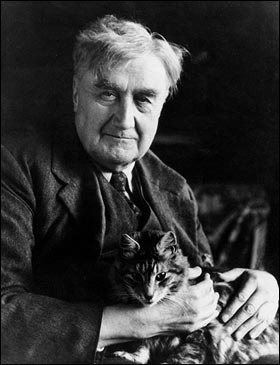

Classical music: Despite overly traditional staging, the Madison Opera’s “Carmen” beguiled and bewitched through the outstanding singing
16 Comments
By Jacob Stockinger
The Opera Guy attended Sunday’s sold-out performance of “Carmen” by the Madison Opera and filed the following review, with photos by James Gill:
By Larry Wells
When I learned that Madison Opera was going to produce Bizet‘s “Carmen,” I was not surprised. It is annually one of the most frequently performed operas internationally, and it is a surefire vehicle for filling seats. It is safe.
On the other hand, once one watches repeated performances of an old favorite, the appeal can diminish. One advantage of an opera is that novel approaches to the production can prevent a warhorse from becoming stale.
I would love to say that the approach both musically and dramatically to this production of “Carmen” broke new ground, but it did not. In fact, the production was as traditional as could be. (Below is the main set, rented from the Lyric Opera of Kansas City.)
I attended a performance of “Carmen” in Tucson a couple of years ago, and the conductor Keitaro Harada breathed new life into the familiar music through interesting tempi and finely nuanced dynamics.
Maestro John DeMain (below, in a photo by Prasad) conducted the Madison Symphony Orchestra in a perfectly fine and occasionally uplifting manner, but there was little new to learn from his approach. The purely instrumental entr’actes shimmered, but during the rest of the opera the singing was at the forefront.
Maestro Harada (below), whom Madison should be actively courting, is currently conducting “Carmen” in Sofia, and the accompanying publicity clip in the YouTube video at the bottom (bear with the Bulgarian commentary) shows that the production is unconventional in its approach although it clearly is still “Carmen.” I would have enjoyed something other than the ultra-traditional staging and sets experienced here in Madison.
At times the production was so hackneyed and hokey that I chuckled to myself – ersatz flamenco dancing, the fluttering of fans, all of the cigarette factory girls with cigarettes dangling from their lips, unconvincing fight scenes, annoying children running across the stage, dreary costumes that hardly reminded me of Seville. And I could go on.
Yet “Carmen” has a way of drawing one in despite oneself. The music is marvelous, and the singing was uniformly excellent.
The four principals were luminous both in their solo pieces and ensembles. Cecelia Violetta López as Micaëla (below right) was lustrous in her two arias as well as in her duet with Sean Panikkar’s Don José (below left).
Panikkar started the performance off with little flair, but from the time he became besotted with Carmen toward the end of the first act he was on fire. He then maintained a high degree of passion and zest in his vocal performance.
Corey Crider (below right) was a wonderful Escamillo, singing his toréador role with great élan despite his unfortunate costumes.
And Aleks Romano (below) as Carmen made the most of her complex character. Her singing was luscious, and her acting – particularly her use of her expressive eyes – was terrific.
Likewise, the lesser roles – Thomas Forde as Zuniga, Benjamin Liupaogo as Remendado, Erik Earl Larson as Dancaïre, a radiant Anna Polum as Fransquita, and Megan Le Romero as Mercédès – were equally well sung. The ensemble work in the quintet at the end of Act II and in the card scene was outstanding.
The chorus (below) sounded terrific throughout, although the women’s costumes and the stage direction made the choristers appear ludicrous as times.
When all is said and done, “Carmen” still beguiled me by drawing me into its characters’ complex psychologies and motivations. Likewise, its music still bewitched me in much the same way as Carmen inexplicably bewitched hapless Don José (below).
But I seem to always wish for more – more compelling productions, more daring music making, more risk-taking.
I do look forward to this coming spring’s production of “Florencia en el Amazonas.” The recording is captivating, and the opera’s performances have pleased a wide variety of audiences by all accounts. And it is something new. Hallelujah!
Did you go to “Carmen”?
What did you think?
The Ear wants to hear.
Share this:
Tags: acting, Aleks Romano, appeal, aria, Arts, beguile, bewitched, Bizet, breathe, Bulgaria, Bulgarian, card, cards, Carmen, Cecilia Violetta Lopez, character, children, choral music, chorus, cigarette, Classical music, commentary, complex, composer, conductor, costumes, dance, dancing, Don José, dramatically, dreary, duet, dynamics, ensemble, entr'acte, ersatz, Escamillo, expression, expressive, eyes, factory, familiar, fan, fight, fine, flair, Flamenco, Florencia en el Amazonas, frequent, frequently, gir;s, ground, hackneyed, hokey, instrumental, international, James Gill, John DeMain, Kansas City, Keitaro Harada, kids, lips, Lyric Opera of Kansas City, Madison, Madison Opera, Madison Symphony Orchestra, manner, motivation, Music, musically, new, novel, opera, Orchestra, Overture Center, Passion, performance, principal, production, psychology, publicity, quintet, recording, Rent, role, safe, scene, Sean Panikkar, seat, set, Seville, singer, Singing, Sofia, sold-out, Spain, stale, surefire, surprise, symphony, tempi, Tempo, toreador, Toreador song, tradition, traditional, Tucson, unconvincing, uniform, United States, University of Wisconsin-Madison School of Music, University of Wisconsin–Madison, vehicle, vocal, vocal music, warhorse, Wisconsin, year, YouTube, zest